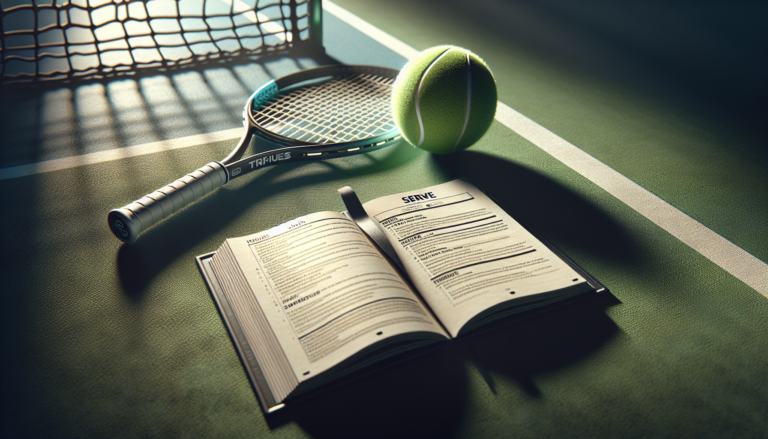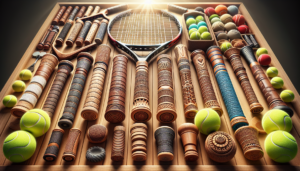Introduction to Tennis Serve Rules
The serve is one of the most important shots in tennis, as it is the only shot that a player has complete control over. Mastering the serve can give you a significant advantage in matches. To serve effectively, it is crucial to understand the rules and guidelines that govern the serve in tennis.
Overview of Tennis Serve Rules
The tennis serve rules are designed to ensure fairness and consistency in the game. These rules cover various aspects of the serve, including foot placement, the order of serving, and what constitutes a fault. Understanding and following these guidelines is essential for all tennis players, from beginners to advanced competitors.
Importance of Mastering the Serve
The serve is the only shot in tennis where the player has total control over the ball. A strong, accurate serve can put immediate pressure on the opponent and set the tone for the point. Mastering the serve can lead to more free points, shorter rallies, and increased confidence on the court. Conversely, a weak or inconsistent serve can give your opponent an easy advantage and put you on the defensive from the start of the point.
Basic Tennis Serve Rules
Before diving into more advanced serving techniques, it is important to grasp the fundamental rules that govern the tennis serve. These basic guidelines ensure that serves are delivered fairly and consistently across all levels of play.
Choosing to Serve or Receive
At the start of a match, players determine who will serve first by flipping a coin or spinning a racket. The winner of the toss can choose to either serve first or receive first. In subsequent sets, the player who did not serve first in the previous set will serve first.
Serving Order in Doubles
In doubles matches, the serving order is slightly more complex. The team that serves first in a set decides which player will begin serving. After the initial serve of the set, the service order follows this pattern: Player A (Team 1), Player B (Team 2), Player C (Team 1), Player D (Team 2). This order continues for the remainder of the set.
Foot Placement and Baseline Rules
When serving, players must stand behind the baseline, between the center mark and the sideline. The server’s feet must not touch the baseline or the court until after the serve is struck. If the server’s foot crosses the baseline before the ball is hit, it is called a foot fault, resulting in a service fault.
Ensuring Receiver Readiness
Before serving, the server must ensure that the receiver is ready to play. The receiver should have time to get into position and establish a rhythm. If the server delivers the ball before the receiver is ready, the serve may be considered a let, and the point will be replayed.
Calling the Score
It is the server’s responsibility to announce the score before each point. The score should be called loudly and clearly so that both the receiver and any officials can hear it. Calling the score helps prevent confusion and disputes over the current game and set scores.
Common Service Faults
Service faults occur when the server fails to deliver a legal serve. Understanding the different types of faults can help players avoid them and maintain a consistent, effective serve.
Foot Faults
As mentioned earlier, a foot fault occurs when the server’s foot touches the baseline or the court before the ball is struck. Foot faults can be called by line judges or the umpire. Players should be mindful of their foot placement during the serve to avoid this type of fault.
Double Faults
A double fault happens when the server commits a fault on both the first and second serves of a point. Double faults result in the server losing the point outright. To avoid double faults, players should focus on delivering a reliable second serve with good placement and spin.
Service Lets
A service let occurs when the served ball touches the net but still lands in the correct service box. In this case, the serve is retaken without penalty. If the served ball touches the net and lands outside the service box, it is considered a fault.
Advanced Tennis Serve Techniques
Once players have mastered the basic serve rules and techniques, they can focus on developing more advanced serving skills to gain an edge on the court.
Types of Serves
There are various types of serves that players can employ, each with its own advantages:
- Flat Serve: A powerful serve hit with little spin, aimed at generating aces or weak returns.
- Slice Serve: A serve hit with sidespin, causing the ball to curve away from the receiver.
- Kick Serve: A serve hit with topspin, making the ball bounce high and move away from the receiver.
Improving Serve Accuracy
To improve serve accuracy, players should:
- Focus on a consistent toss and release point
- Maintain a relaxed arm and shoulder during the serving motion
- Practice targeting specific areas of the service box
Increasing Serve Speed
Players can increase their serve speed by:
- Developing a fluid and efficient service motion
- Engaging their legs, core, and upper body in the serve
- Practicing with weighted balls or resistance bands to build strength
Conclusion
Recap of Key Points
Understanding and adhering to the tennis serve rules is crucial for all players. The key points to remember include:
- Players must stand behind the baseline and ensure proper foot placement during the serve
- The server is responsible for announcing the score before each point
- Foot faults, double faults, and service lets are common serving faults to be aware of
- Advanced serving techniques can help players gain an advantage on the court
Final Tips for Mastering the Serve
To master the tennis serve, players should:
- Regularly practice serving to develop consistency and confidence
- Focus on maintaining proper technique and form
- Incorporate variety into their serves to keep opponents guessing
- Analyze their serving performance and make adjustments as needed
By understanding the rules, avoiding common faults, and continually working to improve their technique, players can develop a strong and reliable serve that will serve them well in matches.






